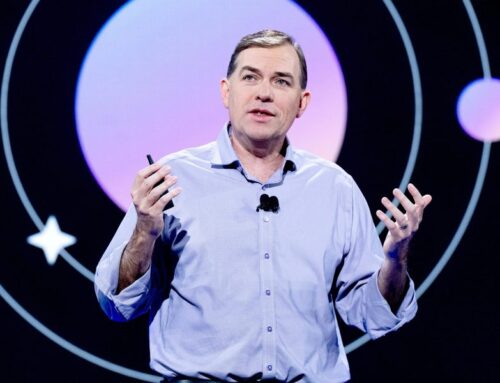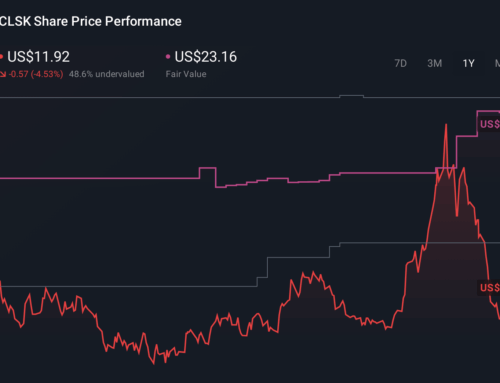Goodbye Satoshi? Why Jack Dorsey Wants a Bitcoin Rebrand
May 19, 2025
In brief
- A new Bitcoin Improvement Proposal seeks to rebrand the top cryptocurrency’s base unit.
- The proposal suggests modifying the base unit from “satoshis” to “Bitcoins.”
- Jack Dorsey and other prominent Bitcoiners support the move, while others believe it will cause confusion or muddle the scarcity narrative.
A divisive proposal to rebrand Bitcoin’s base unit is gaining momentum on social media after Twitter (now X) founder and longtime Bitcoin bull Jack Dorsey shared support on Sunday, racking up more than 1 million views collectively on posts promoting BIP 177.
Authored by software developer John Carvalho, the Bitcoin Improvement Proposal, entitled “Redefine Bitcoin’s Base Unit,” seeks to do just that—by shifting the way the coin’s quantities are displayed, removing the decimal point and leading zeroes in the process.
Currently, a Bitcoin is made up of 100,000,000 satoshis, or “sats,” named after the cryptocurrency’s pseudonymous creator, Satoshi Nakamoto. As Bitcoin has surged in value, currently worth more than $105,000 per coin, some proponents believe that it’s become less appealing or useful as spending money.
“‘Sats’ is definitely the wrong term and is stopping everyday people from acquiring and spending Bitcoin,” Dorsey wrote on X. In another reply, he added: “I’m very worried about Bitcoin becoming money. It must.”
This proposal aims to help address that matter by reframing satoshis as Bitcoin itself, and then referring to a full current Bitcoin as a “BTC”—aka, the coin’s current ticker. For example, if BIP 177 was widely adopted, then a quantity of 0.00002525 BTC would be labeled as ₿2,525, or 2,525 Bitcoin.
(That’d be about $2.66 worth of Bitcoin at the current price. Conversely, 2,525 full Bitcoin is worth about $266 million.)
“BIP 177 is a sincere effort to prevent misunderstanding Bitcoin, and how it works, to ultimately empower users,” Carvalho, the CEO of Bitcoin software and services company Synonym, told Decrypt. “Many people want to speculate that I am trying to ‘solve unit bias’ or appeal to normies, but I am not the evangelical type of Bitcoiner.”
The proposal itself suggests that such a shift would be in line with the original Bitcoin code, and that framing Bitcoin only in the form of full units—with decimal points used to represent smaller or partial BTC amounts—is just the way that people opted to present it.
“The current convention defines one Bitcoin as 100,000,000 base units. This representation requires dealing with eight simulated decimal places, which can be confusing and foster the misconception that Bitcoin is inherently decimal-based,” reads BIP 177. “In reality, Bitcoin’s ledger represents values as integral base units. The decimal point is merely a human-imposed abstraction.”
Beyond Dorsey, an outspoken Bitcoiner who once called the cryptocurrency’s white paper “poetry,” the proposal has attracted other supporters as well. Bob Bodily, the CEO of Bitcoin meme coin launchpad Odin.fun, thinks the proposal makes a lot of sense.
“Rebranding satoshis to Bitcoins honestly makes a lot of sense,” Bodily told Decrypt, citing the role that unit bias played in the rise of Solana meme coins—and the ease in which users can extrapolate their gains if the tokens “just make it to $1.”
Bodily acknowledged that a proposal isn’t necessary for the Bitcoin community to adopt such changes, and that doing so without formal action would be his “top preference.” But a passed BIP “would make it more official, widespread, etc.”
“When I think about a proposal like this from a mainstream adoption perspective,” said Bodily, “it’s kind of a no-brainer to me.”
The proposal has gone through rounds of feedback in its original BIP pull request and via the Bitcoindev mailing list to reach its current state. Carvalho told Decrypt that support picked up this week with Dorsey’s public push increasing “interest in the proposal significantly.”
Decrypt reached out to Dorsey for comment, but did not immediately receive a response.
“These events help make people more comfortable with earnestly considering the idea,” said Carvalho. “This week, there is a lot more support, but also a lot of people defending ‘sats’ and fighting against strawman narratives. The loudest detractors are doing a ‘rally the troops’ thing to show tribal solidarity, but that isn’t something I can worry about. The proposal is entirely rational, thus difficult to refute, so instead we get emotional displays.”
Carvalho suggested that the new Bitcoin unit (the rebranded satoshis) could potentially be represented by a fresh ticker, suggesting BIT as an option. It echoes chatter on social media about calling the unit “bits” or “bits of Bitcoin,” the latter of which Dorsey mentioned.
Aside from defending satoshis and their connection to Bitcoin’s creator, one of the loudest rallying cries against the proposal is the narrative contradiction that comes if individuals are led to believe there are now 21 quadrillion Bitcoin, instead of the currently understood and widely championed fixed total supply of 21 million Bitcoin.
“[It] destroys the entire understanding of 21,000,000 max supply. [It] destroys 15+ years of education where it is explained that 1/100,000,000th of a Bitcoin is called a satoshi,” podcast host Bram Kanstein told Decrypt. “One dollar equals 100 cents, 1 Bitcoin equals 100,000,000 satoshis. It is not difficult.”
Other detractors noted that the proposed shift would cause “mass confusion,” and is merely “preying on unit bias.” But those concerns don’t appear to faze the proposal’s author.
“The BIP does not change anything about Bitcoin’s scarcity itself,” said Carvalho. “The notion that Bitcoiners would suddenly stop reminding everyone how scarce Bitcoin is… it’s absurd, no?”
“I think the people noting that this BIP might also correct unit bias have a much more defensible argument, but neither of these are actual motivations in the BIP,” he said. “I think Bitcoin is great on its own, and describing it clearly and accurately cultivates stronger Bitcoin understanding, and thus a more valuable Bitcoin for everyone overall.”
As for next steps, he told Decrypt that he believes the best course of action is to just “give it some time to grow on people,” while gaining support from others in the Bitcoin ecosystem.
“I don’t want to be overly persuasive or force anything,” Carvalho said. “Bitcoiners are stubborn and need time. BIP 177 is inevitable anyway.”
Edited by Andrew Hayward
Daily Debrief Newsletter
Start every day with the top news stories right now, plus original features, a podcast, videos and more.
Search
RECENT PRESS RELEASES
Bitcoin and Ethereum Wobble as US Reports Highest Unemployment Rate Since 2021
SWI Editorial Staff2025-12-16T13:24:48-08:00December 16, 2025|
Ethereum Crashes Below $3K as Liquidations Spike and Volatility Looms
SWI Editorial Staff2025-12-16T13:24:25-08:00December 16, 2025|
How Ethereum Is Powering the Future of Tokenized Property Investment
SWI Editorial Staff2025-12-16T13:23:51-08:00December 16, 2025|
Visualizing $2.4 Trillion in Energy Transition Spending
SWI Editorial Staff2025-12-16T12:13:58-08:00December 16, 2025|
Appalachian Power seeks approval of renewable energy projects outside the state for West V
SWI Editorial Staff2025-12-16T12:13:41-08:00December 16, 2025|
Amazon distribution center at LAX sells for record price
SWI Editorial Staff2025-12-16T12:11:57-08:00December 16, 2025|
Related Post




